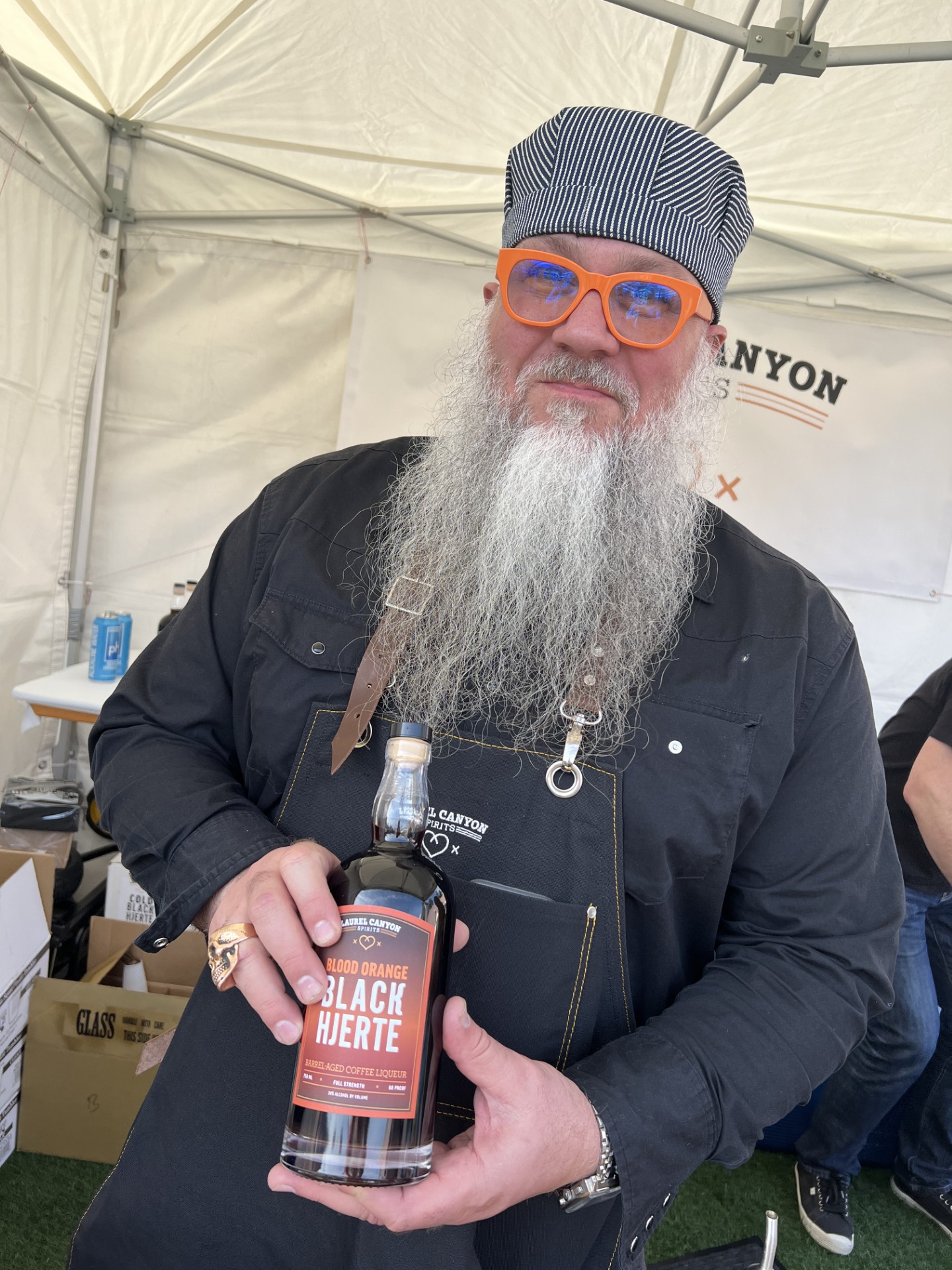
Wine Enthusiasts,
What is a great wine? This question has been asked of us more experienced wine connoisseurs many times by people that are just acquiring an interest in wine. When we experienced wine connoisseurs attend a Grape of the Night meeting, we usually go through a personal judging sequence for a wine as described below:
Evaluate the color and appearance of the wines first.
Quickly smell to get a first impression. Gently swirl your glass to open the wine and smell in detail to evaluate the aroma and bouquet.
Take a fair amount of wine into your mouth and chew so all the taste buds can come into contact with the wine and the tactile receptors in your mouth can sense the wine.
Gently breathe air through the wine to volatilize the flavors. Then swish the wine around the mouth. You can spit the wine out to detect flavors of acidity and tannins.
After taste and overall impression can be achieved by taking a small amount of wine into your mouth and swallowing. Fine wines are judged on how long the flavor lasts in the mouth before it decays and disappears.
As a note, it is very important when tasting wines to avoid pungent smells, perfume, after shave, scented lotions, scented candles, etc as they will interfere with the process of smelling and evaluating the wines.
Now that we have established the process that most of us use when evaluating wines, we go back to the original question, “What is a Good Wine”? I, as well as many of my colleagues have been asked to recommend a good wine from time to time.
When we provide a recommendation, what are we basing it on? Our own personal taste or are we looking at it from the prospective of the person asking?
Many years ago, I was asked by someone to select 2 wines for him and his wife. Neither had experience with wines. I asked what price range he was comfortable with and would be willing to spend. His answer was $200 for the 2 bottles. My first thoughts were that he could buy 8-10 bottles of different wines that were good for this amount of money allowing him and his wife to acquire some appreciation as well as an idea of what they like in different wines. Since he wanted 2 good wines, my recommendation for him and his wife was based on 2 criteria.
Knowing that they were not wine connoisseurs with almost no experience, I wanted to recommend wines that were going to provide a fabulous experience without approaching his $200 budget. For this, I selected Caymus Cab ($60) and Bella Glos Pinot ($40). I chose these based on personal experience knowing that both would be silky smooth, without a strong taste of tannins or acidity and would provide a nice profile of fruits. Even with the fine reputations of these wines, I was curious if they really appreciated these wines.
So here is the dilemma for the wine aficionado. How do we rate a good wine. Do we use the 100 point rating system (RP, WA & WS)? Below is John Vankat’s (author of the Pocket Wine List) opinion of the 100 point system.
Wine Numbers
Numbers, numbers, numbers. You see and hear wine numbers everywhere.
Robert Parker gave this Cabernet an 89. This chardonnay was rated 91 by the Wine Spectator. Wine Enthusiast said 86 for this Zin.
I’ve been thinking about wine numbers ever since the “Chardonnay Challenge” appeared as a Wine Spectator cover story. The Challenge involved two tasters, one an expert on California and the other on Burgundy. They compared 20 California and 19 French chardonnays in a blind tasting, using the standard 100-point evaluation scale.
Sure, it was interesting to see which region “won” (it was California, by a nose). But to me the most interesting result was that the two experts differed greatly in their evaluations of the same wines. Of course the experts sometimes agreed, but only on two of 39 wines — and they were one point apart on just two others. The differences? Well they ranged up to 13 points and averaged 5.1 points.
Five points in wine scoring is enormous. The difference between 89 and 94 for example would be the difference between good and spectacular sales. Ask any wine store. It’s BIG. And the differences weren’t due to the regional preferences of the two experts. No, the differences were due to the subjective nature of wine tasting.
So what do we take home from the fact that experts don’t agree? First, unless your genes and your environment have fortuitously provided you with exactly the same tastes as a wine expert, don’t be obsessed with numbers and depend solely on him or her to tell you what to drink.
Second, the common 100-point scale used by many wine periodicals is misleading, especially when the evaluations come from a panel of reviewers. For example, one of the chardonnays evaluated in Wine Spectator received ratings of 95 and 82 from the two experts. A tasting panel would average these and give a rating of 89, but note that this value doesn’t convey anyone’s perception of the wine.
So should wine drinkers believe that there are real differences between wines rated 1, 2, or even several points apart by a tasting panel? Obviously not.
But I’m not condemning wine evaluation; we all need advice in selecting from the hundreds of new wines released each week. What I am condemning is the assumption that there is precision behind the numbers of a 100 point scale. Can you imagine Siskel & Ebert giving TITANIC 96 thumbs up? And then giving AS GOOD AS IT GETS 95 thumbs — as though that was a meaningful difference?
No, I’d use the 0-100 numbers only as a general guide. In fact, I’d convert them to an A-B-C or 1 to 5 stars grading system. At Wine PocketList, we grade on an A+, A, A-, and B+ scale. Anything lower and what good is a recommendation? But an A- wine at a great price makes it worth a taste.
I’d also ask wine periodicals to give us some help with this. Show people that wine evaluation is not an exact science and replace the inaccurate, deceptive 100-point evaluation scale with a simpler scale that is more likely to express genuine differences.
Something everyday wine drinkers can understand, and use. In short, get real.
John Vankat, PhDFounderThe Wine PocketList
I must agree that unless the people judging wines have the same palate as yours or mine, paying the extra money for a 95 point rated wine may be ridiculous if we do not like the grape, style, etc.
I found out a long time ago when I was brewing beer for competition, I had to increase the alcohol and hops in order to gain recognition and awards from the judges. This is not the way I like to brew beer for my personal consumption. I have never been a hop-head. That is why I enjoy Belgian, English, Scottish and German beers. The hops are subtle in these styles adding slight character without feeling like I just bit into a grapefruit.
I am hooked on the R Wineries Boarding Pass and First Class. The Boarding Pass is an inexpensive wine ($16) that I love to open during the week. The First Class, I tend to enjoy more on the weekends or with guests that appreciate finer wines. The First Class seems to be more structured and balanced with a unique complexity compared to the Boarding Pass. The fruits are well defined and the lingering flavor has the essence of finely layered fruits. First Class and Boarding Pass in my eyes are not just good, but great wines, Bang for the Buck, they are a must have in your wine collection.
At an East Coast Grape of the Night Syrah/Shiraz tasting, a question was asked about the comparison between Molly Dooker Boxer Shiraz and R Winery First Class Shiraz. This is a great comparison of 2 top Australian Wineries. To add another twist to this story, Sarah and Sparky of Molly Dooker and Marquis Philips of R Winery shared a partnership at Marquis Philip Winery before Sarah and Sparky started Molly Dooker. Most of us remember the Marquis Philips Integrity and S9 Shiraz.
For me personally, I could not rate one over the other. Boxer is a syrupy heavily extracted fruit bomb of a wine that has a long lingering taste. A style that Sarah and Sparky at Molly Dooker are notorious for. The Boxer reminded me of the 2006 Molly Dooker Blue Eyed Boy which is also a highly extracted or syrupy wine.
The First Class was more subtle reminding me more of a French style with its slight dryness and complexity with well defined flavors on the palate. One member at our tasting of the First Class and Boxer stated that he would go with the Boxer and a thick steak. After some thought, my opinion was different depending on the situation and mood. I would serve the First Class with a thick steak due to its elegance and have the Boxer while sitting in front of the fireplace on a rainy day. Is either of us right or wrong? Go back to the article by Vankat. IT DEPENDS ON YOUR PALATE. My rating on these 2 wines at the Grape of the Night were both #1. The caveat being the criteria that I already explained above.
What are your opinions? Does the rating system provide the criteria in the selection of your wines? Do you favor a particular judge such as Robert Parker over others? What is your method for judging a good wine?
Cheers,
Rusty










